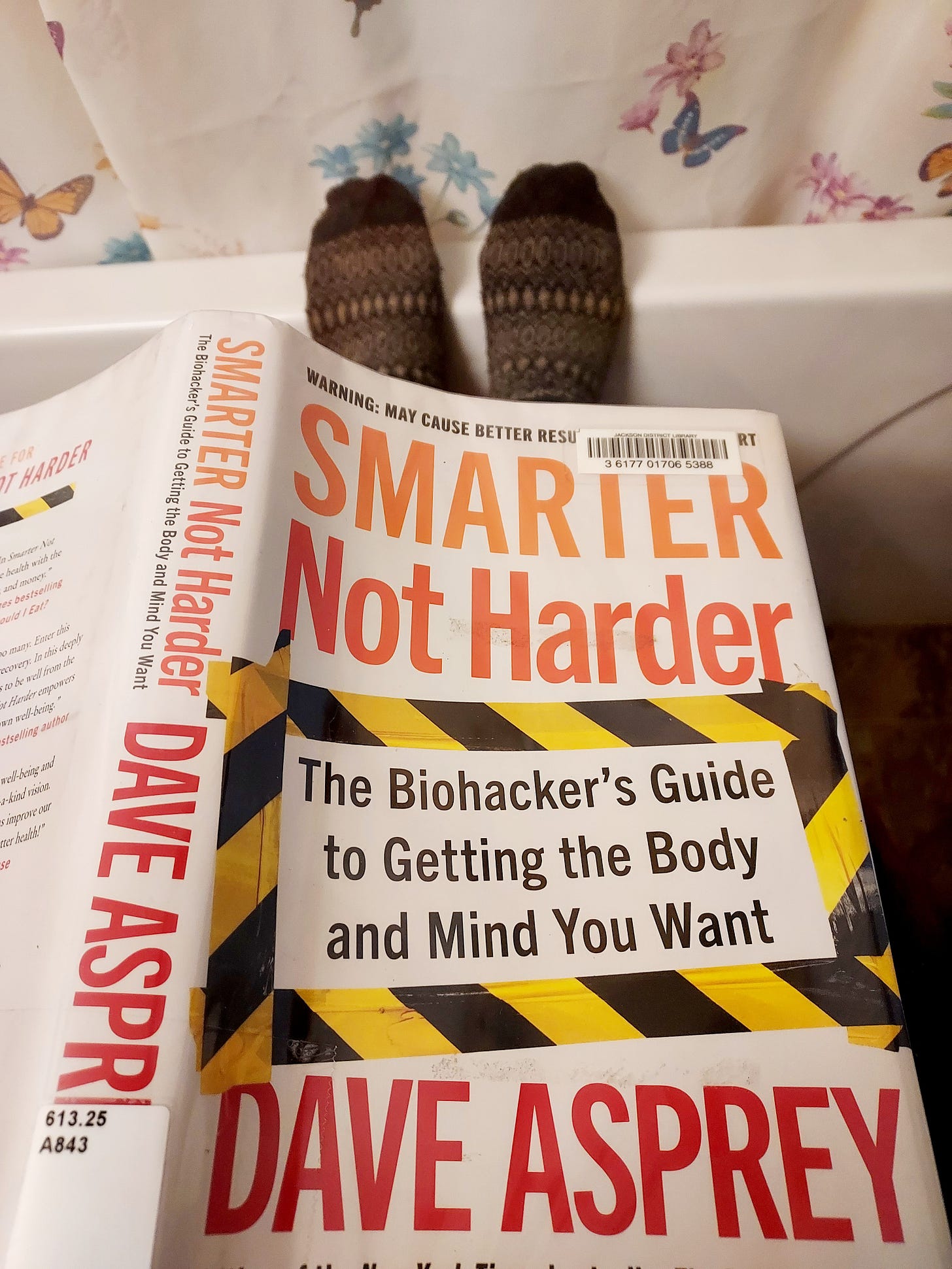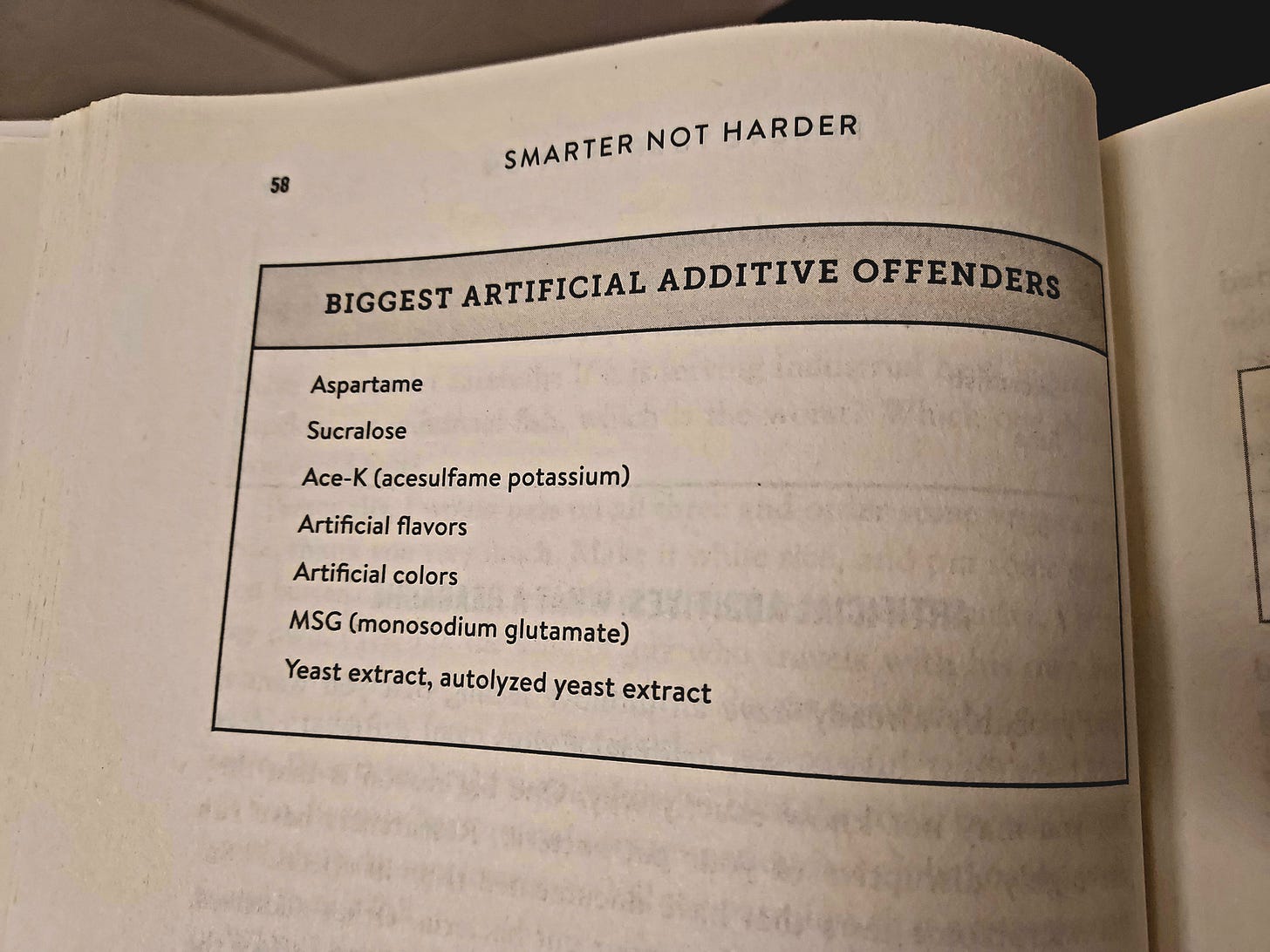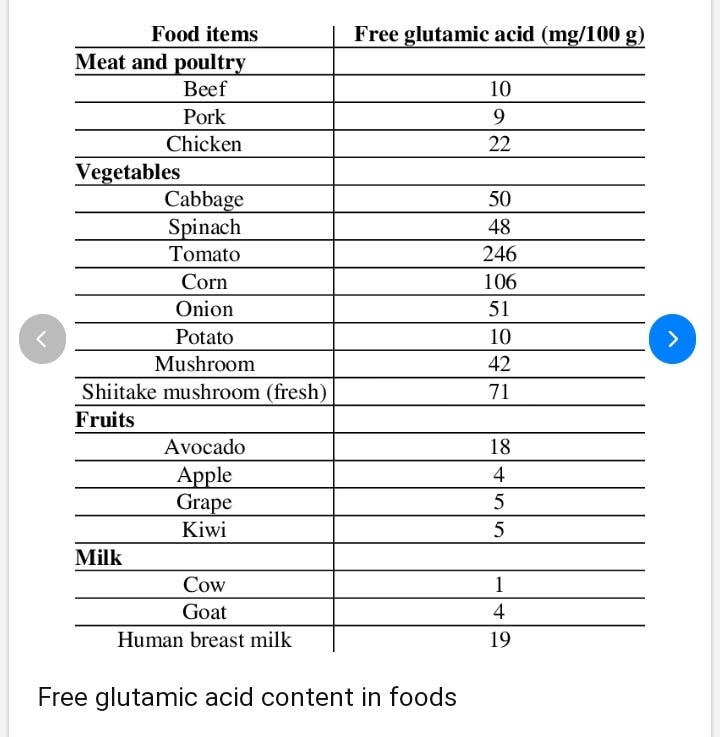Work 'Smarter Not Harder' - book by Dave Asprey; with a focus on laziness and glutamate.
The Biohacker's Guide to Getting the Body and Mind You Want; and acupressure points on the feet.
The premise of the book ‘Smarter Not Harder’ by Dave Asprey (daveasprey.com) is one he learned by being lazy within his tech industry job. He was bored and asked himself the question of how could he program a computer to do what his boss wanted so his own time would be freed up to do other things, like learn more programming skills? He succeeded at improving computer efficiency, at the expense of his own health though. Sitting all day is unhealthy, and sitting at an EMF radiating computer all day is even more unhealthy.
Being sedentary is unhealthy, but then, Why is exercise so hard to stick with?
The exercise industry may have been promoting too much of the wrong sort of endurance exercise, which is useful for a field or factory worker whose employer wants them to stick with the tedious repetitive job all day - and maybe during an overtime shift too.
In pursuing health after becoming unhealthy, he learned the principle of laziness is one of survival. Our body doesn't want to waste extra energy unless it knows there is plenty more in reserve. If we are unhealthy, with sluggish mitochondria or a lack of thyroid hormone or lack or iron, magnesium, or zinc, then our body won’t want to move or simply won’t be able to move very fast or very long without a crash arriving.
Hibernation with the seasons is part of our biochemistry
Seasonal variations led to our body’s needing seasonal changes in calorie intake and calorie expenditure - our intake and output would change with the seasons - plenty of food in the summer and lots of busy work to do raising and gathering and storing the food, and then reduced food and reduced activity in the cold, dark months of winter - the season to stay under the blankets and sleep a little extra.
Hibernation style reduced activity and reduced calorie need is part of seasonal expectations. Then summer plenty leads to plenty of energy too.
High intake of Omega 6 or saturated fats or fructose signal the body to switch to hibernation style energy burning and storage patterns.
The ‘PDK switch in glycolysis’ is involved in whether we burn energy efficiently within the mitochondria and have plenty of energy to spend running around or whether we are burning energy more inefficiently and storing it rather than having it ready to spend on activity.
Different forms of activated Retinoids, vitamin A, also can regulate the switch to anaerobic energy burning. — a follow up search: PDK Switch in Glycolysis - Brave AI and Cis-9 Retinoic Acid Glycolysis Control -Brave AI.
What we choose to eat can affect that switch between use of oxygen to burn sugar or less efficient glycolysis without oxygen. Summer time living has efficient oxygen using metabolism while hibernating pathways are not using oxygen and produce more lactic acid as waste products - the ash leftover after a fire.
Dave mentions omega 3 promoting the summer plenty style of metabolism and omega 6, (soy, corn and seed oils), promotes the fat storing hibernation style. A diet high in fructose - berry season arrived for the bears, also switches us to the hibernation mode.
I was reading about his laziness theory and need to work smarter, not harder, while I was working smarter not harder.
Acupressure points are to be held with firm downward pressure for a minute or two - that is a lot of work to maintain for that length of time if your hands aren't string or even if they are.
The arch area of the soles of the feet have Acupressure points for the liver and other internal organs. I have gotten in a routine of sitting with my feet on the edge of the bathtub so gravity or a leg press can apply the downward pressure. See: ‘Pressure Points on the Feet’ (modernfootankle.com/pressure-points) which reminds us that the tips of our toes are connected with our brain and are a good place for massage or acupressure point stimulation too.

Short bursts of intense activity (for your level of fitness) is the secret to saving time while maximizing fitness results. Dave Asprey makes the case that nature doesn't expect grueling long marches or 8-hour workday standing in one place. A moral value being placed on hard work may have been to promote feeling good about field or factory work. Work more efficiently and quickly and also relax and maintain fitness for survival needs. Survival needs expect a short burst of energy to escape and then relaxing can occur. Being hypervigilant and stressed constantly is not typical of animals in the wild. Alert, yes, worries and anxious? No, that us not generally seen in natural habitats.
Dave shares an example - a deer will run from a predator and then calmly go back to grazing when safe again. The deer isn’t remaining in a fear state, shivering in the corner, worried that a predator is somewhere out there. The deer either forgot or knows that “Of course there is another predator, but I will deal with that when I sniff it or see it”. We waste our own lives when we worry about the future, or dwell on the past.
Circuit training does intense bursts of cardio exercise followed by rests. Dave is saying that nature at peak fitness, wants us ready to run at a moment’s notice - which means we do need to practice that and stay fit enough to do so - but that a grueling endurance run is not what nature expects. That is an oxidative overload - a big trauma on the body for which more recovery is needed. Training for short bursts of power with a quick return to calmness is teaching the body to be good at switching between the Sympathetic, fright/flight/fight, response and the think calmly and digest dinner Parasympathetic response.
My post on cholinergic dysfunction, coffee and nicotine, and the lengthy document, is about an impaired parasympathetic response - risk for Covid19 and autoimmune or other chronic illness, seems to be linked to an overactive Sympathetic system and impaired Parasympathetic system.

Artificial additives - remove the negatives is a ‘Smarter not Harder’ tip
A Table from Dave Asprey’s book Smarter Not Harder lists artificial additives for us to avoid - it is eating smarter to avoid the negatives in the food supply rather than to deal with the negative health effects from eating them.
My migraines would be the next day, so I had to recognize the causal link - “This is a problem food for me”, and then I also had to resist the urge to have just a little bit . . . which too often led to a lot. And, my migraine problem got more sensitive, even a little bit of something as a mystery additive could be a migraine trigger for me. Red and yellow food colorings were the earliest things I identified, along with red wine which is rich in free amino acids including glutamate, aspartate and tyramine - all three can be migraine triggers.
“Biggest Artificial Additive Offenders:
Aspartame [*and Neotame can be present in commercial or ‘organic’ food products off-label legally approved by the FDA);
Sucralose;
Ace-K (acesulfame potassium];
Artificial flavors;
Artificial colors;
MSG (monosodium glutamate), [there are many glutamate containing seasonings, including yeast extract, autolyzed yeast extract];
Yeast extract, autolyzed yeast extract.” (p 58, Smarter Not Harder)

Low Glutamate Foods Can Reduce Toxicity in the Brain - a blog focused on functional nutrition coaching for epilepsy/seizures. (nutritionforseizures.com)
Avoid hidden excitotoxins by avoiding these foods:
7) Diet Drinks And Diet or Non-sugared Foods of All Kinds: These are the primary source of aspartate as they are often sweetened with Nutrasweet, also called Equal or aspartame. AVOID ALL PRODUCTS CONTAINING THIS INGREDIENT.
8) Prepared Foods Such As Soups: 70% of prepared foods and many soups contain MSG. AVOID ALL FOOD PREPARED WITH MSG. This may also be labeled as hydrolyzed vegetable protein, soy protein extract, textured vegetable protein – or not labeled at all. Chinese and some other oriental foods served in restaurants may also contain MSG, as this is a common flavor enhancer in oriental cooking. (nutritionforseizures.com)
Glutamate/glutamine is an amino acid and we need it for health. One form is excitotoxic because it is an active signaling chemical in the brain - over-activating the brain if we eat the entire bag of glutamate seasoned nacho chips, or maybe even if we only eat one serving. Some people’s brains are going to be more sensitive to the affects, possibly due to genetics, or due to a lack of calming chemicals like magnesium, serine, and glycine. Visual example . . . If the car is lacking brakes, then adding more gasoline is going to lead to a crash eventually.
Jillian Levy has a thorough discussion of the role glutamine plays in healthy digestion and the negatives that glutamate can play on brain health. (daxe.com)
“What are symptoms of high glutamate? Signs that someone may be sensitive to this amino acid include burning sensations or tingling of the skin, headaches or migraines, nausea and digestive upset, and chest pains.” (daxe.com)
What I noticed about high glutamate snack foods, is that I wanted more, I would easily overeat them. Then there was an initial giddiness, a high, manic and fun even - ‘tingling of the skin’ ~ tingling of everything - more “on”, but followed by a migraine later on, maybe the next day. Digestive upset from overeating would probably follow too, but I would have blamed that on overeating.
Glutamate avoidance - food guides
This food guide lists oxalate containing foods and ‘SAG’ - foods with either salacylate, amines (like histamine or tyramine), and glutamate. (sync/pdf)

Seasonings and additives to avoid on a food ingredient label are included in this article. Tomato and cheesy Italian dishes would be rich in glutamate and add fermented black olives and canned mushrooms for even more. Chinese meals with fish stock, soy sauce, and mushrooms don’t even need MSG - monosodium glutamate to have a lot of glutamate in the meal. Rich bone broths, gelatin or whey powder supplements are also rich in free glutamate. Split pea soup is a favorite comfort food — with a lot of free glutamate, add a meaty bone to broth while cooking for even more rich glutamatey goodness. Glutamate will add savory richness to a food and that is why is in so many of our favorite foods and seasonings — we like it. It tastes good to us.
Glutamate can be more of a problem for some individuals genetically when enzymes are lacking that break down free amino acids. Anyone with poor health or who is older might not be digesting as well as they had during better health. An excess at a meal might lead to eating an excess of food for many people though, as it is excitatory - seems great! Have more!
Anything hydrolyzed
Autolyzed yeast
Bouillon
Broth (Bone, Meat, or Fish stocks more than vegetable broth - longer simmering or roasting over shorter cook-times.)
Calcium caseinate
Citric acid
Corn starch
Corn syrup
Flavors
Gelatin
Maltodextrin
Milk powder
Modified food starch
Monosodium glutamate
Monopotassium glutamate
Pectin
Soy protein
Soy sauce
Stock (Bone, Fish or Meat broth)
Texturized protein
Whey protein
Yeast extract
Many natural food sources also contain free glutamate. Some of these are:
Aged cheese/hard cheese/Parmesan in particular, any cheese and dairy casein in general
Bone Broth
Broccoli
Dairy casein
Fish Sauce
Grape Juice (and more is in wine/red wine)
Malted barley
Matured, preserved, or cured meats and cheeses
Mushrooms
Peas
Ripe tomatoes / tomato sauce and tomato products
Soy sauce, soy protein
Walnuts
Wheat gluten
https://www.drlamcoaching.com/adrenal-fatigue/complications/effects-of-glutamate-sensitivity-and-hidden-ingredients-on-health/ *Alphabetized and notes added by me.
Disclaimer: This information is being shared for educational purposes within the guidelines of Fair Use and is not intended to provide individual health guidance.





So tricky figuring out what to eat! In my opinion, the fastest way is to find a nutrition person who is just like you, and who has figured out what works for them... Dave could learn some stuff from you, and you could learn from Dave how to make your story into a best-selling book 🤪
I identified with Dave because of the mold, and of course the coffee infatuation, and his very sensible "i'm just going to try it" approach.
But yesterday I found someone whose experience with SIBO is a match - and when she cited a specific SNP that drove her solution I ran over to my PC to check my 23andme report, and sure enough, I have the same one ...
I should give her credit here -
https://www.ambersnaturalnutrition.com/healing-sibo-naturally/